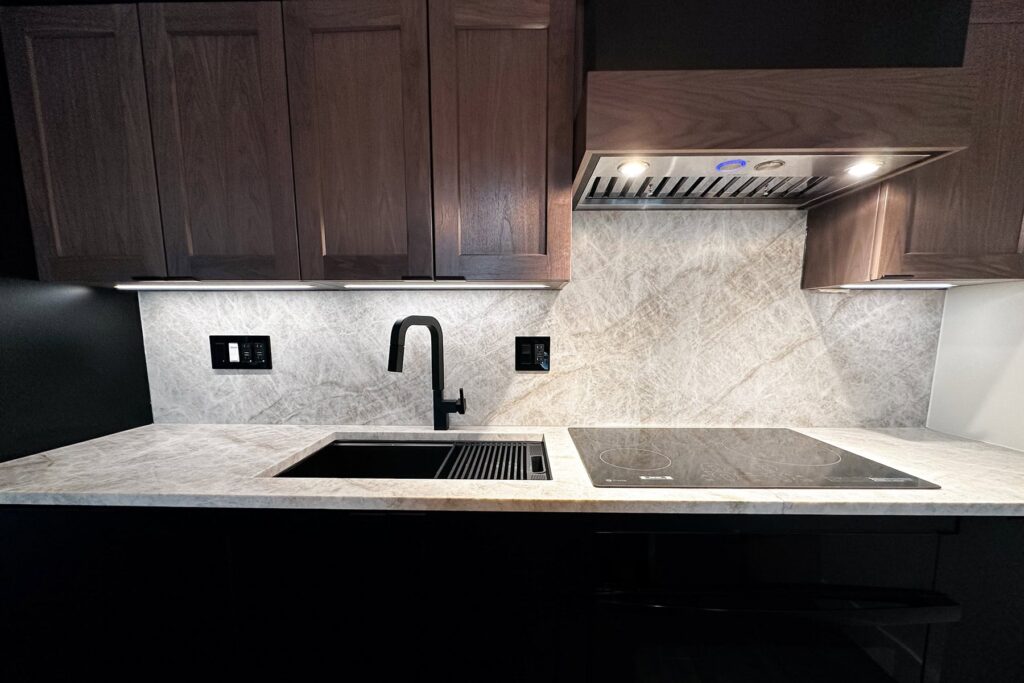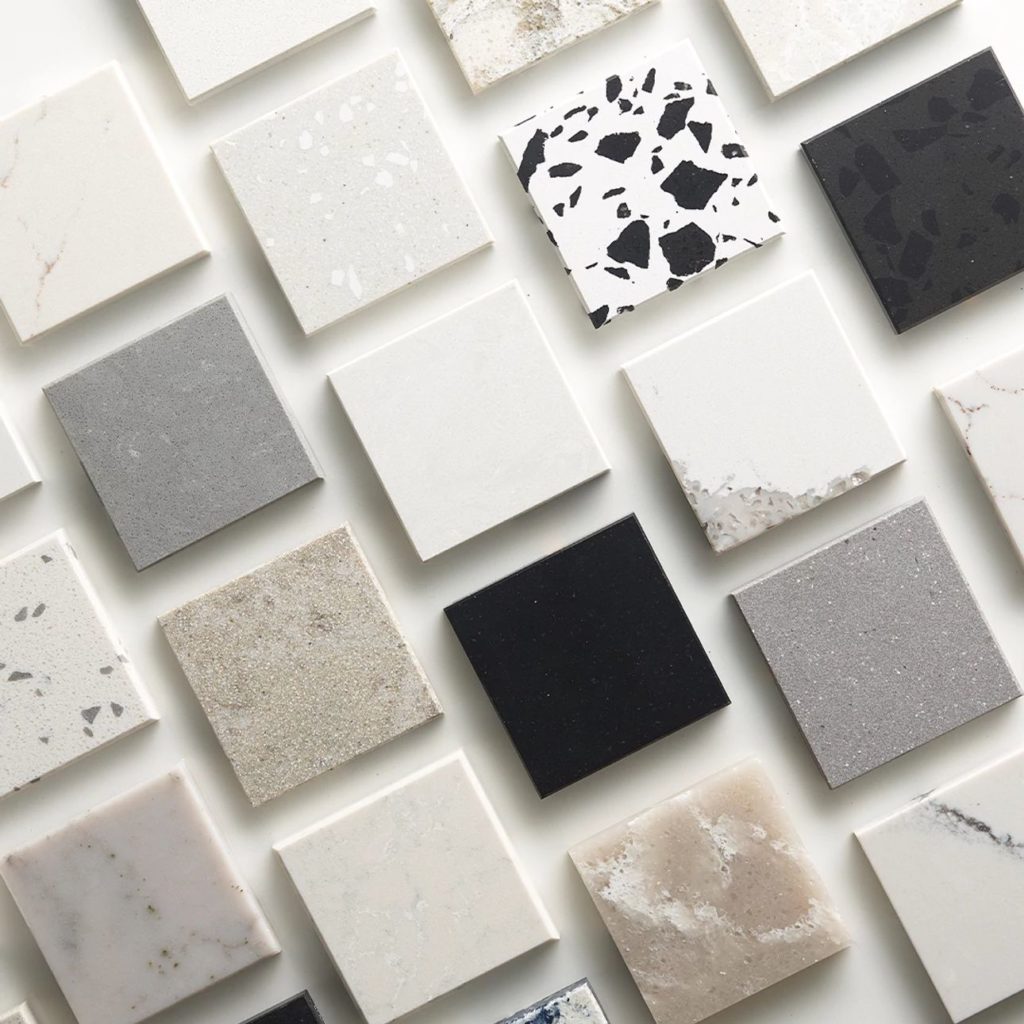If you tuned in for last week’s post, you might remember that we discussed the journey your countertop goes through before landing in your home. (In case you don’t, you can check it out here!) You might also remember that we said we would discuss the different types of stone in the follow-up blog. As promised, we’re here to share with you all the different types of materials we build with and what make them unique.

First, let’s talk about the trending stone of the decade: Quartz. There’s a lot to say about this stone, considering it’s the “it” stone right now. Out of all the stones we’ll cover, this is the only one that is man-made. For countertops, they are referred to as quartz countertops when they follow a specific manufacturing process, known as the Bretonstone process. Manufacturers use the scraps from leftover resins and pulverized waste rocks, like marble, granite, and sometimes actual quartz. The Bretonstone process does not require actual quartz to be used for it to be labeled as a quartz countertop, but it is very likely that your quartz countertop will be made with it, considering its durability and availability. Because of its manufacturing, quartz is a wonderful eco-friendly and budget-friendly addition to your home. It’s also very customizable, so if you have a specific look in mind, it’s very easy to get exactly what you want. Really, the only downside to this stone is its sensitivity to heat. Because of the resin in quartz, it is not recommended to set down hot pans or anything of a similar temperature directly on the counter, or else risk discoloring. Otherwise, quartz is practically indestructible! And at Stone City, we can definitely provide all the right tips to make sure you keep your countertop in the best shape possible.
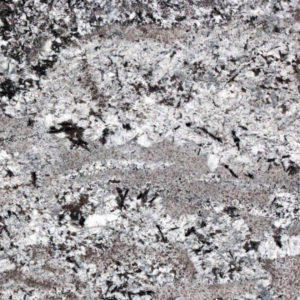
Another popular stone choice for countertops would be granite. Granite was used in luxury homes in the 1920s and became the mainstream countertop of choice in the 1970s. The stone is composed mostly of quartz and silicate minerals. It forms from magma with a high content of silica and alkali metal oxides that slowly solidifies underground. Knowing this, it’s no surprise to find that most granite can withstand temperatures of up to 2,300 degrees Fahrenheit. It’s durable, scratch-resistant, heat resistant, and germ-resistant material. It can bear the daily wear and tear of the busy kitchens. The downside is that this stone can be a bit pricey, and it does require regular sealing. But the overall durability and stylishness of granite are so worth it!
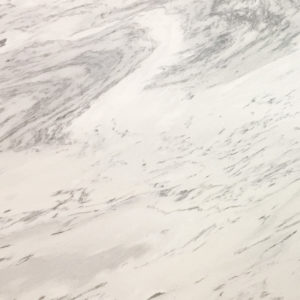
A lot of people opt for quartz as a way to get the look of marble for a lower price. But no matter how advanced technology becomes, it just can’t beat the real thing. Marble has long been renowned for its reflectiveness. The word “marble” originates from the Greek word “marmar”, which means “to glisten”. Marble is a metamorphic stone that starts as limestone buried in the Earth. Immense pressure and high heat compact and transforms the original limestone over hundreds of years and results in large blocks of marble. These blocks are harder, denser, and more colorful than the original stone. Most people recognize marble by its distinctive veining patterns, which are created by small minerals that fill cracks and fissures in the original limestone. Marble tends to be associated with creamy or gray tones, but marble comes in a variety of shades, depending on the region. In Sweden, you’ll find marble with a dark green hue, whereas in Italy, you’ll find marble that’s more of a blueish-gray color. Because of its density and durability, marble is a great choice for buildings like the Parthenon and the Taj Mahal. It’s also heat resistant, which helps to keep interiors cool during hot climates. It’s also hypoallergenic due to its low porosity. However, this stone is not recommended for heavy kitchen use; it’s porous enough to stain easily, so you have to be careful when drinking wine or cooking with acids near it!
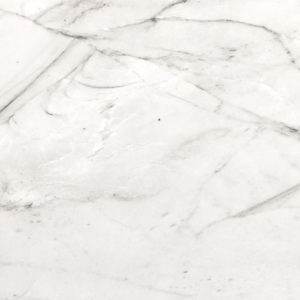
If you’re looking for a natural stone that looks similar to marble but is more durable, you might be interested in quartzite. Quartzite is a hard, metamorphic rock that was originally pure quartz sandstone. It is formed when the sandstone’s quartz grains are fused from heat and pressure. Like marble, it also comes in a variety of colors. Differing from marble, it’s a harder and less porous stone, which makes it a better option for a kitchen countertop. According to an ancient Japanese legend, the breath of a white dragon formed quartzite. In some cultures, it is believed that quartzite is a living entity that is even used in rain rituals. Definitely a fun fact to share with guests admiring your remodel! Check out our quartzite countertops in Chicago.
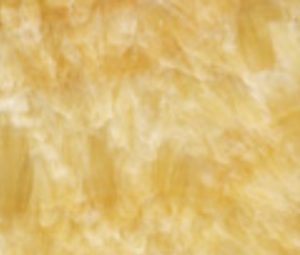
Did you know that onyx is a type of marble? Both are formed from a mineral called calcite. Commercially speaking, onyx refers to slabs of stone that are made of layered bands of light-colored or translucent minerals. It is this characteristic that makes onyx an exciting choice for a backlit backsplash. Onyx forms on the surface of the earth’s crust when spring water has an abundance of calcite dissolved in it. The variations between layers are caused by the differences in the water flow rate and the number of impurities. Calcite can appear white/clear in its natural state but can become tinted by small amounts of other minerals. Iron oxide is an example of this – this mineral causes the color of onyx to appear like a warm, honey color. Though onyx is smooth and non-porous, it can become scratched and etched pretty easily, which is why it is not recommended as a kitchen countertop.
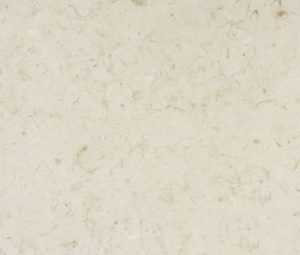
Limestone is composed mostly of calcite and aragonite, which comes from the compaction of shells of dead aquatic creatures. Both are different crystal forms of calcium carbonate. Limestone is known for having a more bright and white/champagne colored palette, with colors that are consistent throughout the stone. This stone is ideal for high traffic areas and low maintenance households due to its low porosity and its ease of maintenance. It can easily be dust mopped to clean, and even after a lot of wear and tear, still manages to look like new.
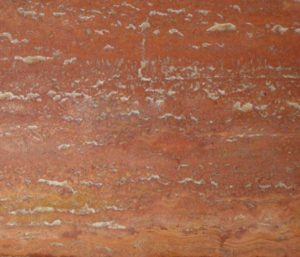
Travertine is similar to limestone in where it occurs naturally and its natural composition. The only difference is that limestone is created when layers of sedimentary rock are subjected to more pressure and heat. Travertine has a porous, lace-like texture and tends to have a darker color palette. It’s a softer stone and very porous, so it’s not recommended for areas that might receive a ton of traffic, like countertops or flooring. It works best as a backsplash or a wall feature. Travertine is a less expensive choice than limestone, but that is because it is higher in maintenance and doesn’t last as long. If you insist on using this stone for flooring or countertops, we recommend filling its holes with resin and keeping up with routine maintenance.
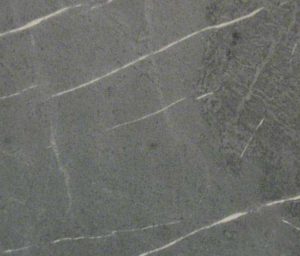
One of the underdogs of the stone world is soapstone. Soapstone is a talc-schist, which is a type of metamorphic rock. It is composed largely of the magnesium-rich mineral talc. It is usually dark greenish-black, although lighter green-gray slabs are also common. Soapstone can be confusing because even though it is formed by a very soft mineral, it is actually quite durable and non-porous. Soapstone makes a great kitchen countertop because of its ability to withstand heat. In fact, Native Americans in eastern North America used soapstone to make ornaments, smoking pipes, cooking slabs, etc. They also would ride 60 miles in canoes to collect soapstone for effigy carving and cooking bowls.

Slate is a metamorphic rock that is formed when mudstone or shale is placed under a large amount of pressure over thousands of years. Most slate is gray in color and available in a variety of these shades. However, slate also occurs in shades of green, red, black, purple, and brown. The color depends on the amount and type of iron and organic material in the rock. Like soapstone, it is also ideal for busy kitchens due to it being non-porous and heat resistant. Its surface is durable, as well as easier to clean and maintain than granite, marble, and even concrete. It is important to note that the corners of slate can become brittle over time. It’s recommended to have the corners professionally rounded off to prevent cuts or cracks, which can become really sharp.
Let’s also talk a bit about tile. The main difference between tiles and slabs is the overall measurements. Tiles are usually around 12 x 12 inches or 18 x 18 inches in length and width, and about 1cm in thickness (excluding mosaic tiles – this is a whole other topic that we will touch on in the future!). Slabs, on the other hand, are much, much larger. The industry standard for the thickness of slabs is either 2cm or 3cm. As far as the length and width, they can come in a variety of sizes from different retailers, but expect it to be at least 5 feet in either direction. Of course, we can always cut these down to fit the needs of a project!
So, now that you’re more informed about the different types of stone, you can be that much more confident in your upcoming renovation plans! Next week, we’ll discuss tiles in further detail and all the different ways they can be used to create inviting and invigorating spaces.
References:
https://www.flintstonetops.com/facts-about-quartz-countertops/
https://newsroom.longandfoster.com/2018/07/countertops-changed-last-50-years/
https://www.midwestmarbleandgranite.com/cleaning-stone-countertops/fun-facts/
https://keystone-granite.com/key-facts-about-layouts-and-kitchen-countertops/
https://findthehomepros.com/kitchen-countertop-guide-5-interesting-facts-about-quartz/
https://www.thecountertopfactory.com/blog/interesting-facts-about-kitchen-countertops/
https://www.hunker.com/12000173/slate-vs-granite-countertops
